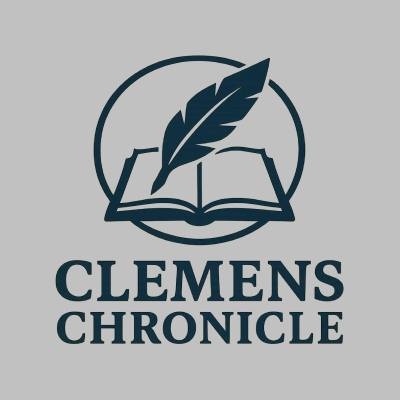Hannibal, Missouri, a town steeped in history and famously known as the boyhood home of Mark Twain, has always understood the profound importance of education. From its earliest days as a burgeoning river port to its present-day vibrancy, the establishment and evolution of schools and colleges have been central to Hannibal’s growth, shaping its citizens and contributing immeasurably to its unique character. This article delves into the rich history of Hannibal’s educational institutions, tracing their journey from humble beginnings to the comprehensive systems we see today.
Foundations of Learning: Hannibal’s Earliest Schools
In the nascent years of Hannibal, as steamboats plied the Mississippi and pioneers laid down roots, formal education was a rare commodity, often relying on the dedication of individuals or small community efforts. The very first schools were typically subscription-based, meaning families paid a fee for their children to attend, and instruction often took place in private homes, church basements, or small, rented rooms. These early educators, often women, were pioneers themselves, laying the groundwork for literacy and basic arithmetic in a rapidly expanding frontier town.
As the population grew and the need for more structured learning became evident, Hannibal saw the establishment of more formalized private academies and denominational schools. These institutions, while still not publicly funded, offered a slightly broader curriculum and aimed to provide a more consistent educational experience. They served a vital role in educating the children of the town’s earliest merchants, riverboat captains, and burgeoning professional class, laying the intellectual foundation for future generations.
The curriculum in these foundational schools was, by modern standards, quite basic, focusing primarily on reading, writing, and arithmetic, often supplemented with religious instruction and moral lessons. Access to education was not universal, and for many children, especially those from less affluent families or those needed for labor, schooling was sporadic or non-existent. Nevertheless, these early efforts, however rudimentary, represented the community’s initial commitment to knowledge and its belief in the power of education to uplift its citizens.
Expanding Horizons: Hannibal’s Evolving Schools
As Hannibal matured from a frontier outpost into a bustling commercial center in the mid-19th century, the demand for accessible, public education became undeniable. The establishment of free public schools marked a significant turning point, moving away from the subscription model and embracing the principle that education should be available to all children, regardless of their family’s economic standing. This shift led to the construction of dedicated school buildings, designed specifically for learning, and the implementation of more standardized curricula.
The late 19th and early 20th centuries witnessed a remarkable expansion of Hannibal’s educational infrastructure. As the town’s population swelled, so did the need for more schools, including the crucial development of a robust high school system. Hannibal High School, in particular, became a cornerstone of the community, offering advanced studies and preparing students not only for local trades and professions but also for higher education, a concept that was becoming increasingly important nationwide.
Beyond the basic K-12 structure, Hannibal’s educational landscape continued to diversify, reflecting the changing needs of an industrializing America. Vocational training began to gain prominence, preparing students for careers in the burgeoning industries of the region, from railroading and manufacturing to the service sectors supporting river trade. This period truly solidified Hannibal’s commitment to providing comprehensive educational opportunities that served the practical and intellectual needs of its growing population.
Shaping Citizens: Hannibal’s Schools and Their Impact
Hannibal’s schools have always been far more than just places of academic instruction; they have served as vital community hubs, shaping the character and civic identity of generations of Hannibalites. Through shared experiences in classrooms, on sports fields, and during school events, students learned not just subjects, but also the values of cooperation, responsibility, and community engagement. These institutions fostered a sense of belonging and local pride that has been instrumental in defining Hannibal’s unique spirit.
The impact of these schools extended deeply into the social and economic fabric of the town. They prepared young people for productive lives, whether they chose to stay in Hannibal and contribute to its local industries or venture beyond its borders for further education or professional pursuits. Many of Hannibal’s most successful business leaders, educators, and community figures can trace their foundational learning and early civic development back to the halls of these very schools, highlighting their role in social mobility and economic progress.
Indeed, the enduring legacy of Hannibal’s schools lies in the countless individuals they have educated and empowered. They have instilled a love of learning, a respect for history, and a forward-looking perspective in their students, many of whom have gone on to make significant contributions to the arts, sciences, public service, and local commerce. The schools have, in essence, been laboratories for citizenship, nurturing the minds and spirits that have built and sustained our beloved river town for generations.
Building the Future: Hannibal’s Educational Legacy
Today, Hannibal continues to uphold its strong tradition of educational excellence, with a robust public school district—the Hannibal Public School District—serving students from pre-kindergarten through high school. These modern institutions are equipped with up-to-date facilities and dedicated educators, continually adapting their curricula to meet the challenges and opportunities of the 21st century. The district remains a cornerstone of the community, committed to providing a high-quality learning environment for all its students.
Beyond the K-12 system, Hannibal is also home to higher education opportunities, most notably Hannibal-LaGrange University, a private liberal arts institution that has been a significant presence in the community for over a century. Additionally, branches of regional community colleges, such as Moberly Area Community College (MACC), offer vocational training and associate degrees, providing pathways for lifelong learning and workforce development right here in Hannibal. These institutions collectively ensure that educational opportunities extend beyond high school for local residents.
As Hannibal looks to the future, its educational institutions remain at the forefront of its community development. They are vital in preparing the next generation for an ever-evolving world, fostering innovation, critical thinking, and a commitment to civic engagement. The legacy of learning, which began with those early, humble schools, continues to thrive, ensuring that Hannibal remains a place where knowledge is valued, potential is nurtured, and the future is built on a strong foundation of education.
From the rudimentary lessons in early subscription schools to the comprehensive offerings of today’s public schools and universities, Hannibal’s journey in education reflects its enduring commitment to progress and the well-being of its citizens. These institutions have not only imparted knowledge but have also woven themselves into the very fabric of the community, shaping its past, influencing its present, and laying the groundwork for a bright and educated future for generations of Hannibalites.















